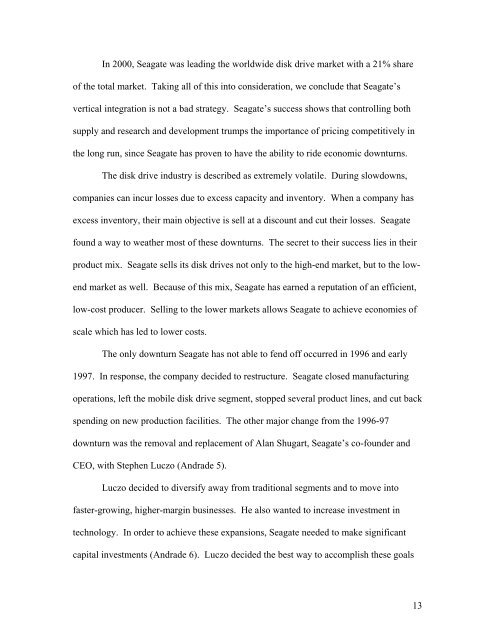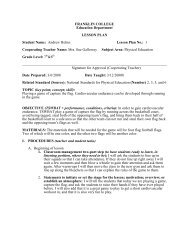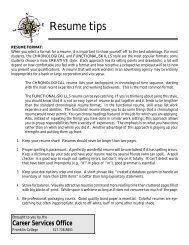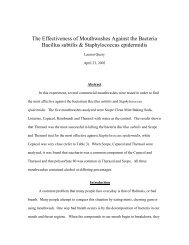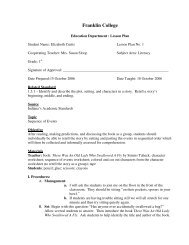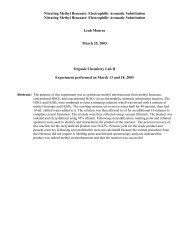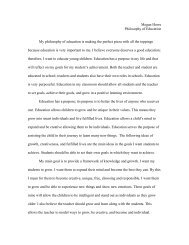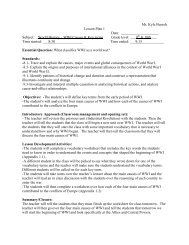Melissa Bockhold Heather Coddington - Franklin College
Melissa Bockhold Heather Coddington - Franklin College
Melissa Bockhold Heather Coddington - Franklin College
Create successful ePaper yourself
Turn your PDF publications into a flip-book with our unique Google optimized e-Paper software.
In 2000, Seagate was leading the worldwide disk drive market with a 21% share<br />
of the total market. Taking all of this into consideration, we conclude that Seagate’s<br />
vertical integration is not a bad strategy. Seagate’s success shows that controlling both<br />
supply and research and development trumps the importance of pricing competitively in<br />
the long run, since Seagate has proven to have the ability to ride economic downturns.<br />
The disk drive industry is described as extremely volatile. During slowdowns,<br />
companies can incur losses due to excess capacity and inventory. When a company has<br />
excess inventory, their main objective is sell at a discount and cut their losses. Seagate<br />
found a way to weather most of these downturns. The secret to their success lies in their<br />
product mix. Seagate sells its disk drives not only to the high-end market, but to the low-<br />
end market as well. Because of this mix, Seagate has earned a reputation of an efficient,<br />
low-cost producer. Selling to the lower markets allows Seagate to achieve economies of<br />
scale which has led to lower costs.<br />
The only downturn Seagate has not able to fend off occurred in 1996 and early<br />
1997. In response, the company decided to restructure. Seagate closed manufacturing<br />
operations, left the mobile disk drive segment, stopped several product lines, and cut back<br />
spending on new production facilities. The other major change from the 1996-97<br />
downturn was the removal and replacement of Alan Shugart, Seagate’s co-founder and<br />
CEO, with Stephen Luczo (Andrade 5).<br />
Luczo decided to diversify away from traditional segments and to move into<br />
faster-growing, higher-margin businesses. He also wanted to increase investment in<br />
technology. In order to achieve these expansions, Seagate needed to make significant<br />
capital investments (Andrade 6). Luczo decided the best way to accomplish these goals<br />
13


